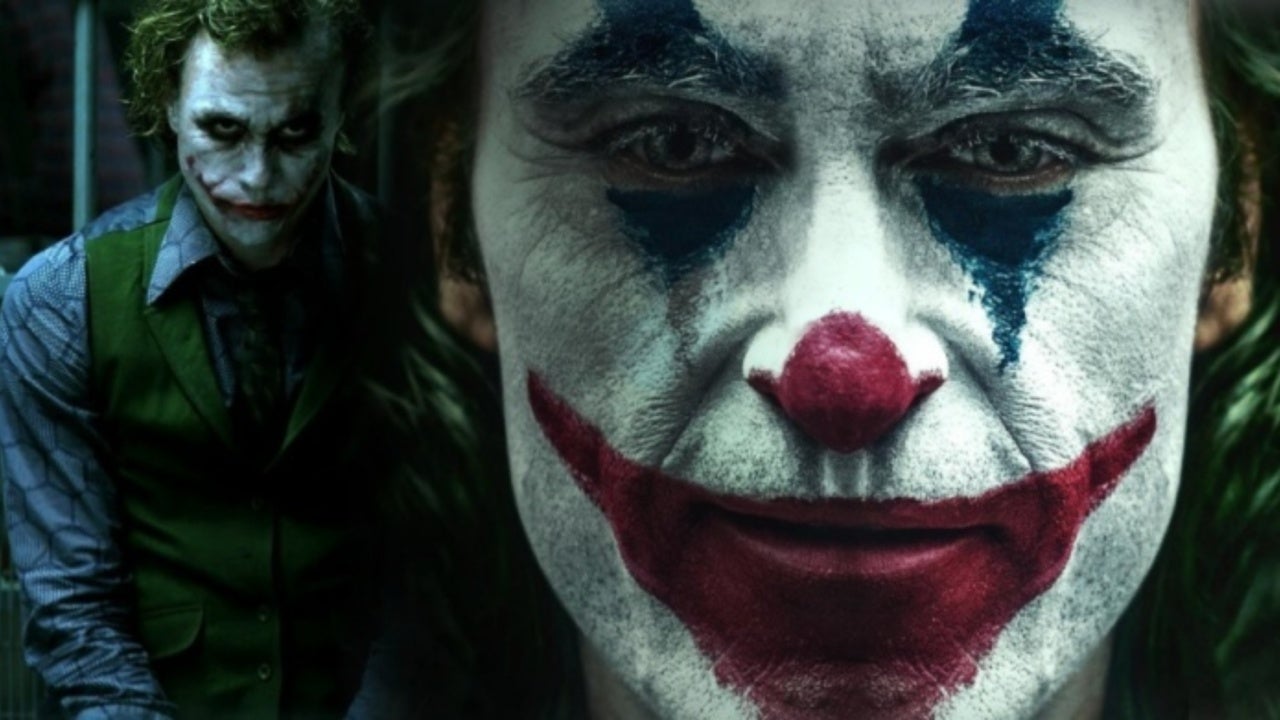With reviews and news coming in like the most recent one at the Venice Film Festival, it seems that Joaquin Phoenix’s Joker is set to take the world by storm. The Venice Film Festival isn’t the one singing the praises of the DC Extended Universe’s (DCEU) alternate take on the Crown Prince of Crime. Just a while back ago, the film was a massive hit at the Toronto International Film Festival (TIFF).
All this positive buzz has us pumped for Joker and the unique rendition that director Todd Phillips will be bringing to the character. The film could have the potential to rival the cultural weight and acclaim of Nolan’s depiction of the Joker in The Dark Knight. Once all our excitement had simmered down, we began to ponder upon the nature of the Joker and why he holds such a hallowed place in pop culture. Among comic book, and comic book film fans, he’s considered one of the greatest villains of all time. A legend of the genre, but why though?
What is it about this psychotic clown that has us so enthralled? What is this mystique that surrounds the man’s madness? Put on a happy face and take a good whiff of laughing gas because we’re taking a look at why Joker is such a massive pop culture icon.
Comedy Amidst The Chaos
A mostly defining feature of the Clown Prince of Crime has got to be his twisted and obsessive dedication to the art of comedy. I mean it’s pretty obvious seeing that the man is dressed like a clown, am I right? A more interesting question is: What drives this genocidal jester’s sense of humour? Honestly, it can be hard to trace. I mean over the years, depictions of the Joker in comics and cinema have varied and so has his style of “jokes” if you will. The more overt brands of humour he employs would be a violent form of physical comedy, which derives humour from bodily distortions, exaggerations and at times even pain.
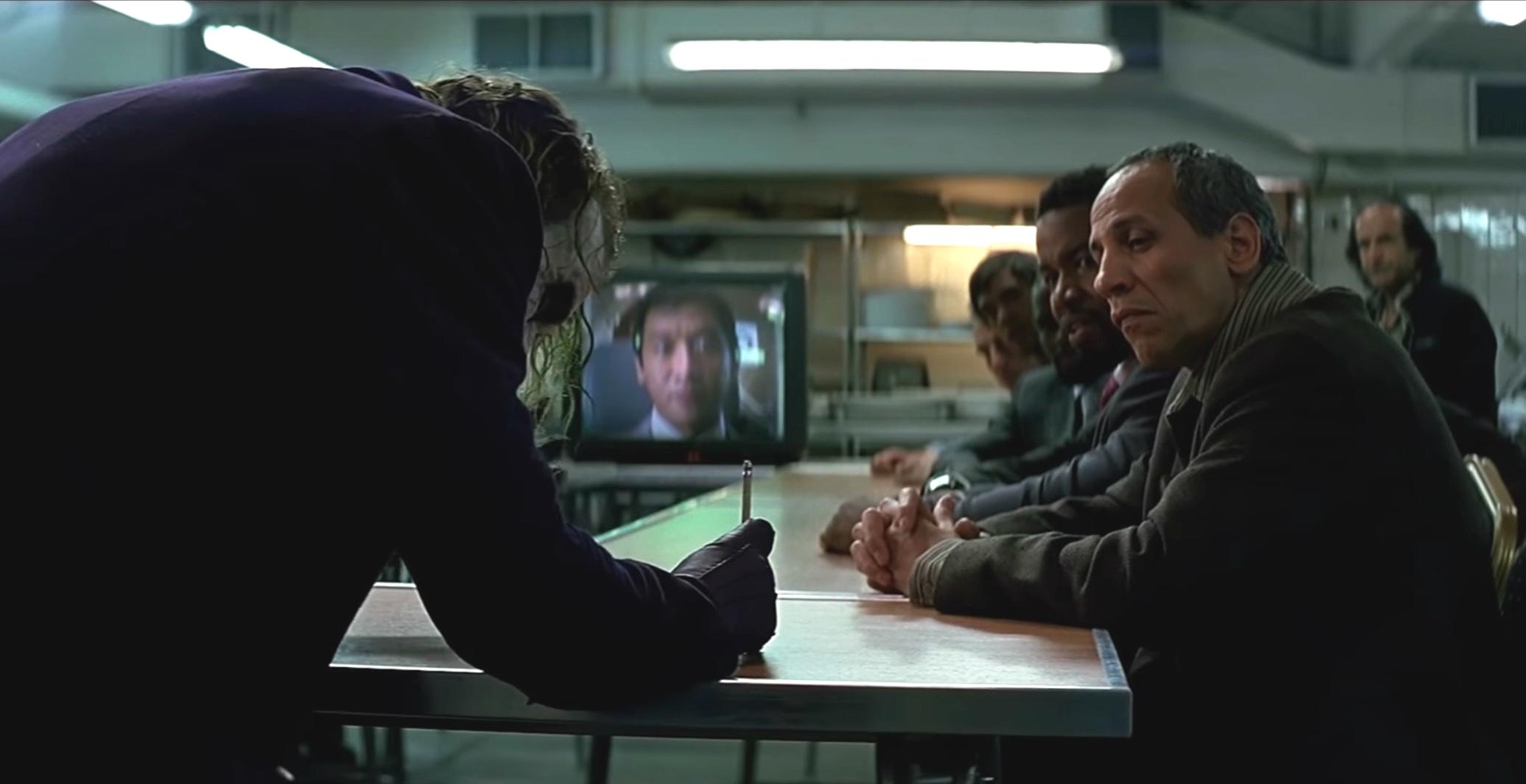
That’s something we can see throughout most depictions of the man, from 1989’s Jack Nicholson with his incendiary hand buzzer to Heath Ledger’s pencil trick in The Dark Knight. Another easy category to land the Joker on would be black comedy, which finds amusement in broaching typically taboo subjects like death, murder, discrimination and sexuality. The thrill of the transgressive. It’s no secret that the Joker gets a good bit of his jollies from seeing the look on people’s faces when he nonchalantly commits acts of terror and plays them off as gags.
And while these examples of humour aren’t exactly wrong, they fail to get to the heart of what binds the entirety of the Joker’s comedic outlook on life. That being said, I think I may have figured out what binds all of these disparate elements of the Joker together in the Incongruous Juxtaposition Theory of humour (or Incongruity Theory). In Incongruity Theory, laughter is seen as a sort of release valve at the absurdities and chaos of life.
A response to a break in order and a subversion of the perceived normatives of reality. For example, some might find amusement in seeing a donkey riding a man or a sleazy priest trying to pick up girls at a bar because of our internalized narratives. In the following cases being that it is that man is master over nature and therefore rides the donkey and that priests are celibate and chaste men of God.
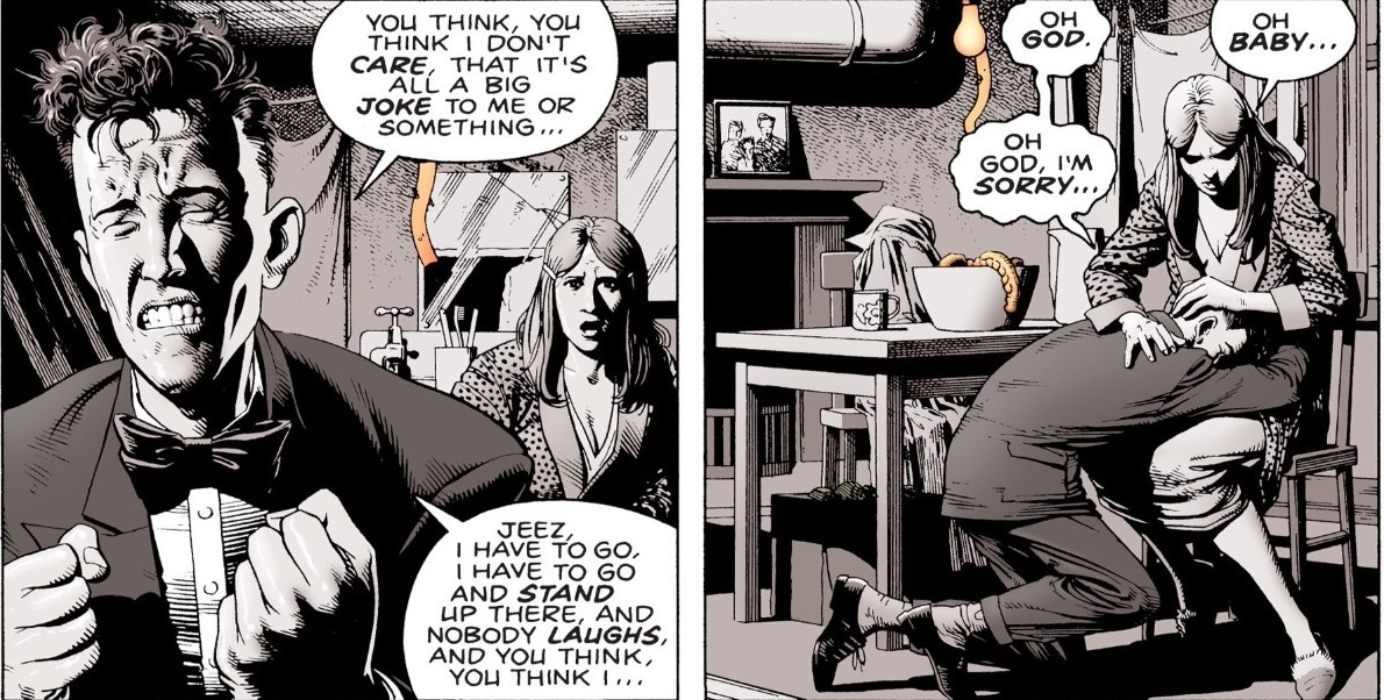
German philosopher Arthur Schopenhauer describes this sense of humour as a discovery of the disconnect or break between the ideal and the real. This break from the ideal and real is exactly what drives the Joker. Think about it, he’s a clown, a profession traditionally associated with levity and joy, and yet he spreads terror and fear wherever he goes. He perpetrates horrific acts of cruelty but plays them off as harmless pranks before carrying on. In one of the most seminal works on the character by Alan Moore, The Killing Joke, we get a picture into the tragic incongruity of the man’s life. A failed comedian who lives a life of tragedy and heartache, who in the face of overwhelming despair, laughs at the bleakness of life.
Right, so why exactly does his strange and seemingly ugly logos make him such an attractive figure? Why is the rightfully repulsive villain greeted with the same enthusiasm and acclaim as that of his heroic counterpart? Interestingly enough, it is because he is in a way a hero, though not in any traditional sense of the word. French philosopher, Albert Camus purports that anyone who in spite of the meaninglessness and cold indifference of the universe decides to find meaning, and even joy in the face of it all is an “absurd hero”.
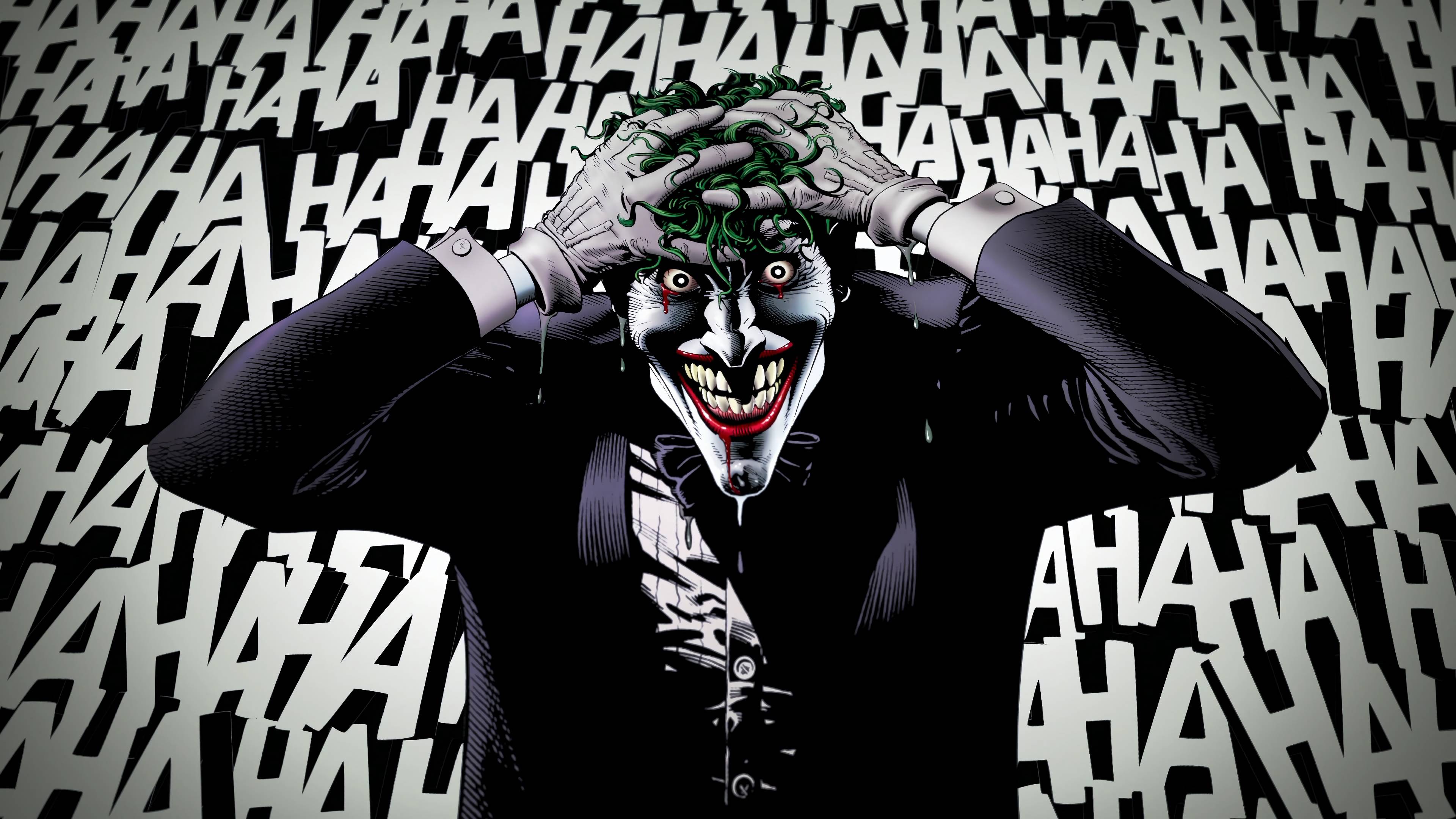
A hero who instead of fighting, or escaping depending on how what’s to view it, the cosmic indifference and cruelty of the universe through hope, faith or justice like Superman or Batman, he laughs at it. A giant existential middle finger to both traditional beliefs and universe itself. It’s all one big joke and he’s the only one in on it. He’s aware of the incongruity of the chaos and randomness of the universe and our desperate need to find meaning and order, and still carries on laughing. This unique perspective on life coupled with the current trend of pop culture allows the Joker though to be more than just a comedian. He also plays the role of a critic.
The Clown Critic
If you haven’t noticed, comic book films have been moving away from the traditional idea of heroes and villains. Since 2008’s The Dark Knight, we’ve seen a trend of films deconstructing the notion of being a hero. We’ve mourned the death of the tradition in 2009’s Watchmen, saw these more cynical ideas bleed into 2013’s Man of Steel and 2015’s Avengers: Age of Ultron. Then, came the trend of romanticizing outlaws and anti-heroes with films like Deadpool, Guardians of the Galaxy, Suicide Squad and Venom entering into cultural consciousness.
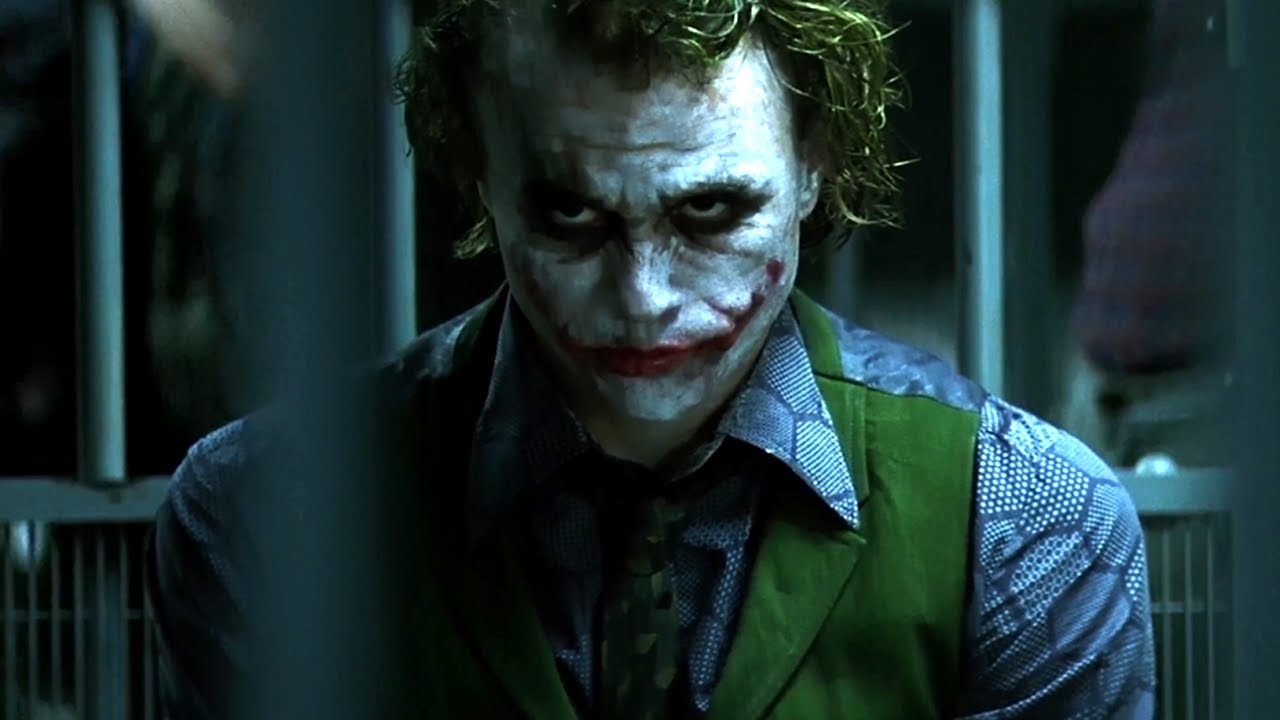 Right now, we see a blatant satire if not an outright attack on the traditional, pristine view of superheroes by way of Amazon’s The Boys. In many ways, Heath Ledger’s Joker was a pioneer of this modern movement. Though we have seen the ideas of anti-heroes and moral ambiguity in the past, The Dark Knight propel it to new and frightening territory.
Right now, we see a blatant satire if not an outright attack on the traditional, pristine view of superheroes by way of Amazon’s The Boys. In many ways, Heath Ledger’s Joker was a pioneer of this modern movement. Though we have seen the ideas of anti-heroes and moral ambiguity in the past, The Dark Knight propel it to new and frightening territory.
With people becoming increasingly more cynical of traditional institutions like government, religion and family units, they tend to gravitate towards individuals who attack said institutions. Characters like Rick Sanchez from Rick and Morty who fly in the face of common decency and constructed, or divine values. He serves to point out the absurdity and hypocrisy of these institutions and it feeds back into Incongruity Theory. It’s transgressive, uncomfortable and quite often deeply funny. For the Joker, however, it’s a little grimmer than Rick. He isn’t merely ambivalent to the absurdities of life and the powers that be, he’s far more evangelical in his philosophy.
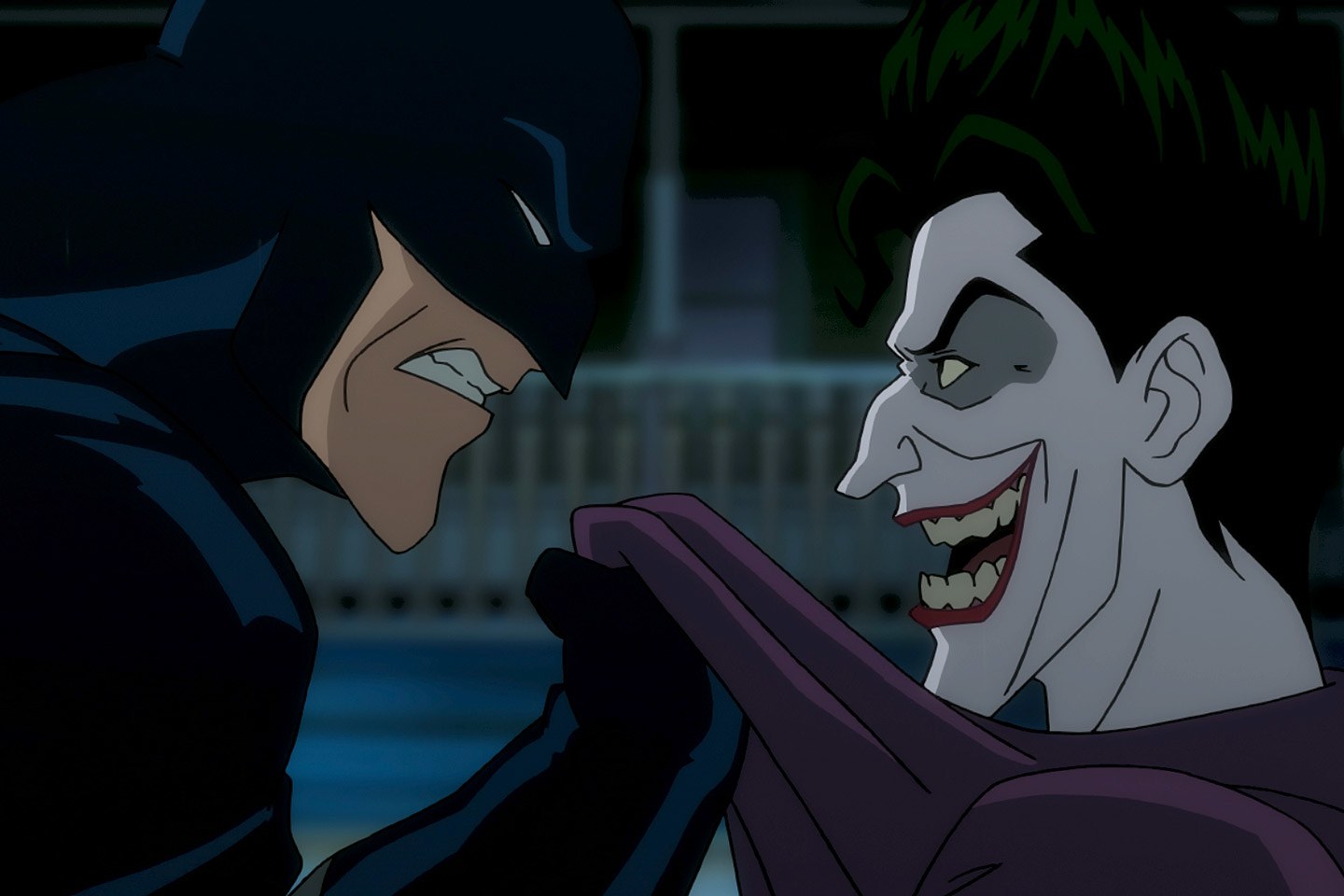
He wants to prove to all of us that deep down, we’re all insane for merely going along with our perceived ideas of order and structure. He offers an invitation to shatter that illusion and follow him down into the abyss. This is why his dichotomy with the Dark Knight is so interesting and absurd. Batman is driven by a moral code of never intentionally taking another life, no matter the cause. He’s meant to stand as a symbol of a man who rose up against tragedy and the meaninglessness of life to forge a better world in the shadow. Joker, on the other hand, is a man who embraced the horrors of life and seeks to show everyone the truth of it all.
With society becoming more disillusioned by the day, it makes sense that the character of Joker could be seen as a sort of folk hero or anti-hero among the cynical public. A contrarian critic who sits atop the walls, laughing at the world as it burns around us. To some, he’s probably revered as an iconic iconoclast, an edgy badass the system can’t touch. And while I can definitely understand how some could find romance in said character, I can’t really say I’m in that camp. Frankly,he scares the shit out of me! No matter how much we break down the man. No matter how well we try to connect the dots…there’s just something about the guy we can’t comprehend.
The Ambiguity of Evil
For all his appearances in the media, for such a sordid history of violence and chaos, there’s still so little we know about him…or where he came from for that matter. “But wait!”, some of you might be saying. “We do know his history and origins based on Alan Moore’s The Killing Joke. He was a failed comedian who went through one bad day that ruined his life forever and he fell into a vat of chemicals. Case solved.” Unfortunately, even the origin story we see in the book is possibly false.
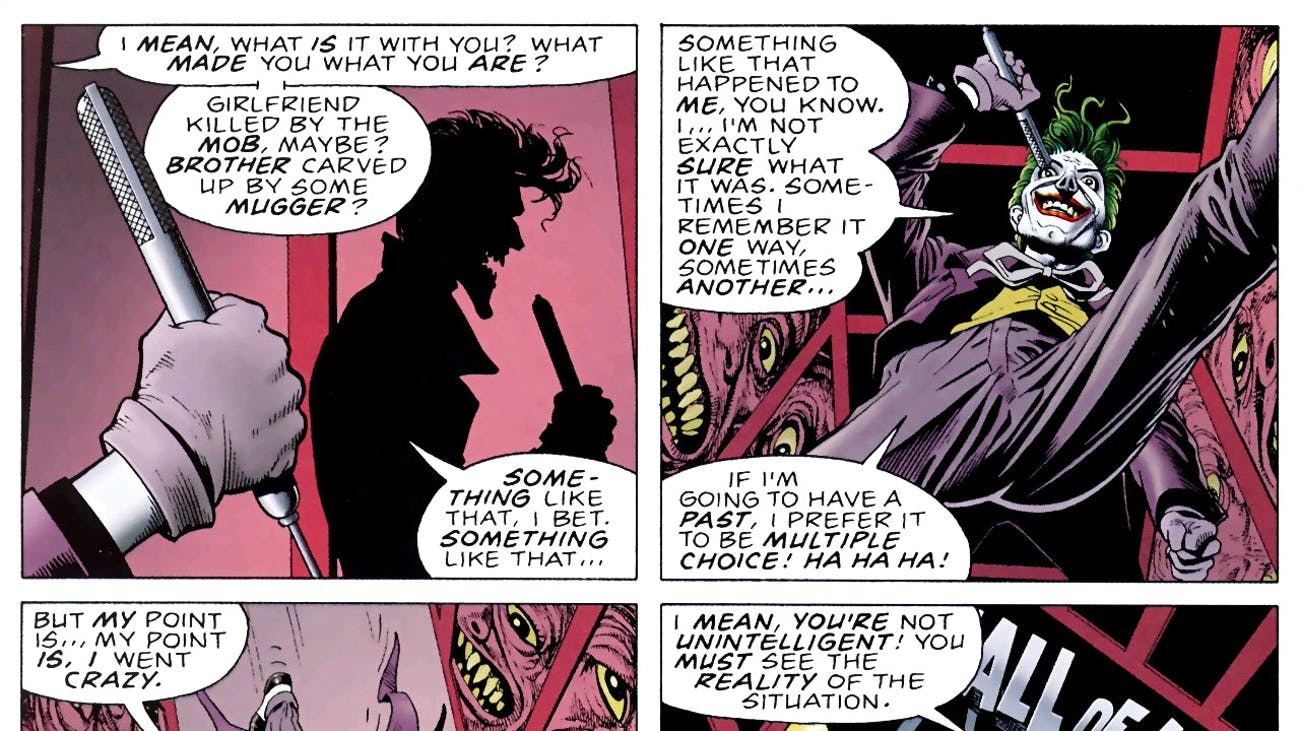
In the comics, the Joker says “Sometimes I remember it one way, sometimes another…if I’m going to have a past, I prefer it to be multiple choice!” We see this ambiguity carried over to 2008’s The Dark Knight with the Joker giving multiple stories behind “that smile on his face”. The first being that it was an abusive father, the other coming from self-infliction. All of them equally plausible and all of them equally false.
And this trend isn’t showing any sign of slowing down. In DC’s New 52 comic book run entitled Batman: Endgame in 2014, we see the Joker’s mythology stretched to its limits. It is heavily implied that long before Gotham City came to be, long before the European settlers came to the New World, there was a Pale Man waiting for them at the shore, laughing.
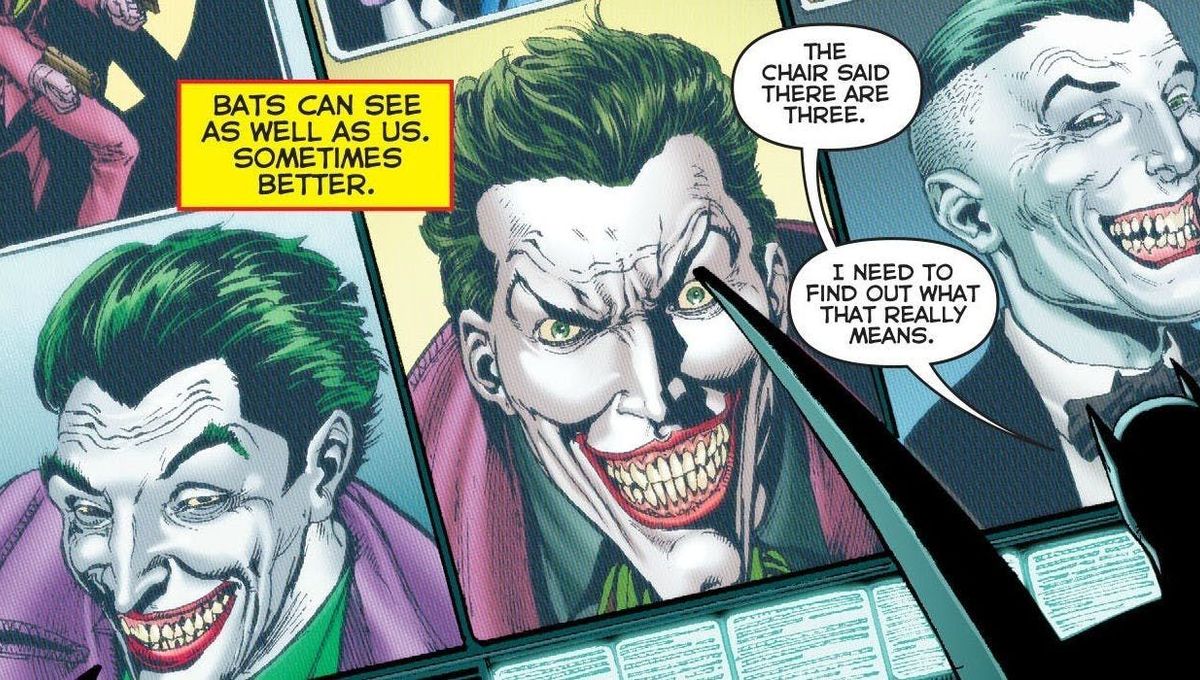
If you thought that was mind blowing and confusing, you ain’t seen anything yet, friend. In 2016’s Justice League: Darkseid War, we see Batman hop onto the Mobius Chair, a device allows him to know all things in the universe. He asked the chair for the identity of the Joker and the chair informed Bruce that there were three Jokers! Holy dogshit on a stick, what the hell is going on?!
Cosmic horror pioneer H.P. Lovecraft once wrote that the “oldest and strongest emotion of mankind is fear, and the oldest and strongest kind of fear is fear of the unknown”. I couldn’t agree more with the man. Part of what makes Joker such a captivating character (safe for Jared Leto’s version) is the ambiguity that surrounds the man and the writers, at least the good ones, over the years have always understood that.
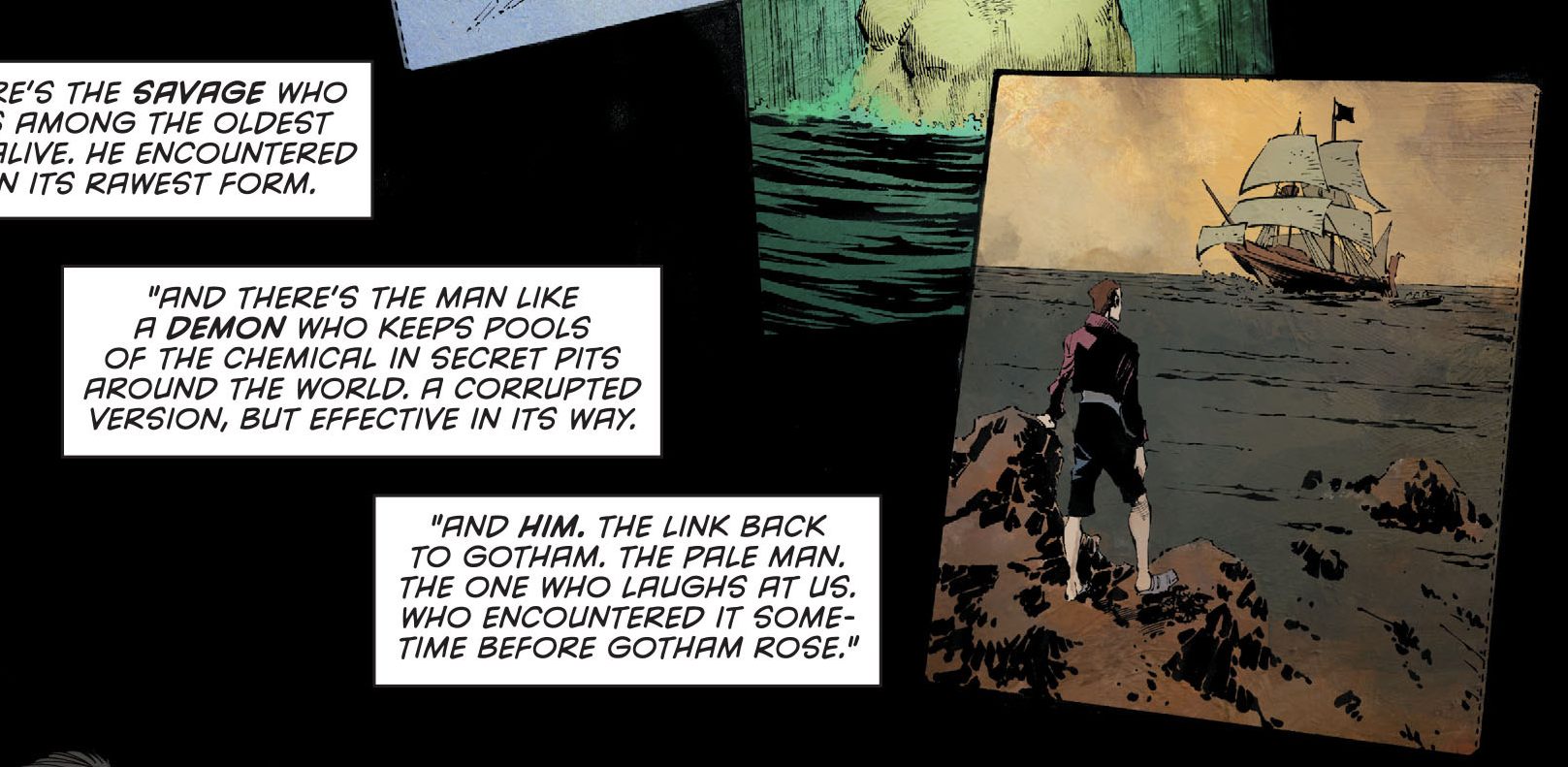
We live in an age that demands empirical truth with science closing the gap between the known and unknown day by day. And we’ve built an entire culture and even economy out of fictional speculation and investigation. Therefore, there is this mystique that surrounds the Joker that has yet to be uncovered. What is he? Is he an immortal demon sent to torment Batman? Is he a victim of circumstance? Is he an amoral psychopath? Or an immoral sadist? This ambiguity is meant to mirror our reality, in which we cry out for a reason or answer to the problem of evil and we are met by silence. In this case, all you’ll get is laughter.
The Joker is a character who will continue to incite conversations, speculations and analysis. Something I don’t see going away anytime soon. He is many things to many people. A symbol for anarchy and anti-establishment. An amoral psychopath. A victim of circumstance. An insane crime boss. A demon from beyond the void. He is all of them and none of them at all. It is this versatility and complexity that gives the man such immense staying power in culture. Deep down we are both revolted and captivated by him for in him, perhaps we see our own madness.
Follow us on Instagram, Facebook, Twitter or Telegram for more updates and breaking news.


